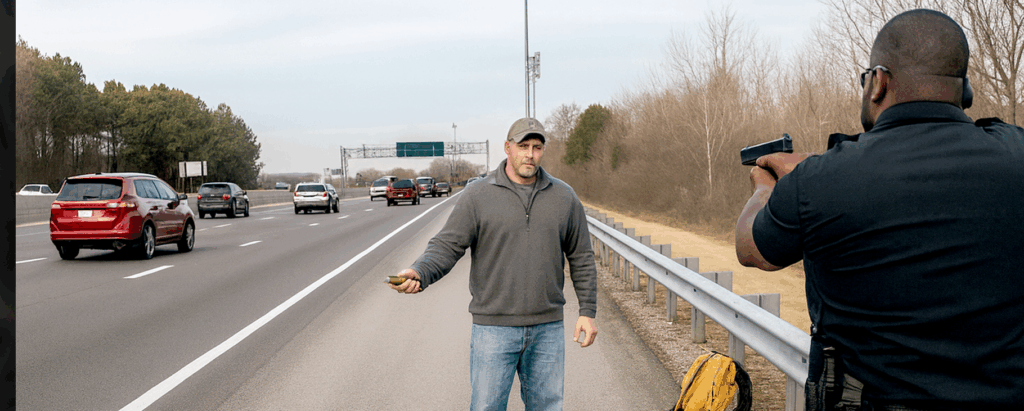Watkins v. Davis, 2025 WL 2730900 (11th Cir. 2025)
“What we have here is failure to communicate,” said Strother Martin to Paul Newman in the great 1967 film, “Cool Hand Luke.” (Yeah, I’m dating myself — my granddaughter recently called me a dinosaur.) That might have been an appropriate quote to begin the court’s opinion in Watkins v. Davis, but instead the court chose: “‘the single biggest problem in communication is the illusion that it has taken place.’ That was certainly the issue here. And in this case, that problem resulted in a near-tragedy.”
During the height of the pandemic, Tammy Watkins was responding to an urgent call to pick up an oxygen concentrator, tanks, and supplies for a COVID patient who had just been discharged from the hospital where she worked. It was late in the evening, and it was dark. Watkins loaded the equipment into her car and started to drive away. “Alone in a desolate place,” the decision noted, “she feared for her safety.”
Just then, Watkins saw two men with flashlights walking toward her. Watkins didn’t know this, but at the same time she was picking up the medical equipment, police officers were investigating a report of a possible truck break-in at a different address in the same cul-de-sac. As the officers approached Watkins with their flashlights, they failed to communicate that they were police. Watkins had no way of knowing who they were or what they wanted. Frightened, Watkins sped up the drive, away from the building.
One of the officers stepped into the path of Watkins’ oncoming car as another officer shouted, “Freeze!” Neither the officers’ body-worn camera video nor the building’s surveillance video confirmed an officer was ever actually in the path of Watkins’ car as she sped up the driveway toward the street. It was clear that she never swerved toward either officer.
Watkins was met with a hail of gunfire. She ducked below the dashboard and drove out of the cul-de-sac. There, she saw more law enforcement personnel, who told her it had been police officers who fired at her. Though her car was totaled, she was unscathed. Watkins was handcuffed and held for three to four hours in the back of a patrol car.
“No reasonable officer could have believed there was reasonable suspicion or probable cause to seize or shoot at her.”
Watkins sued, alleging unlawful seizure, excessive force, and unlawful property seizure in violation of the Fourth Amendment. The trial court denied summary judgment to the officers, finding a reasonable jury could conclude the officers lacked reasonable suspicion or probable cause, and that their actions violated clearly established law. The officers appealed.
The court of appeals affirmed the trial court’s denial of qualified immunity. Though the appellate court acknowledged that “being a police officer is a hard job, and we are indebted to officers who regularly put their lives on the line to keep us safe,” the court also questioned whether the officers acted “reasonably and with common sense.” The court declared the officers “seized” Watkins — by physical force when they shot her car and by a show of authority when they stepped into the path of her vehicle. No reasonable officer could have believed there was reasonable suspicion or probable cause to seize or shoot at her, the panel decided, and the warrantless seizure of her car was not justified by exigent circumstances.
Timely legal analysis on law enforcement-related cases: SUBSCRIBE NOW!
At the end of the day, “killing” a car can be easily remedied. But killing a medical worker on her way to care for a seriously ill patient … not so much.
- Webinars



